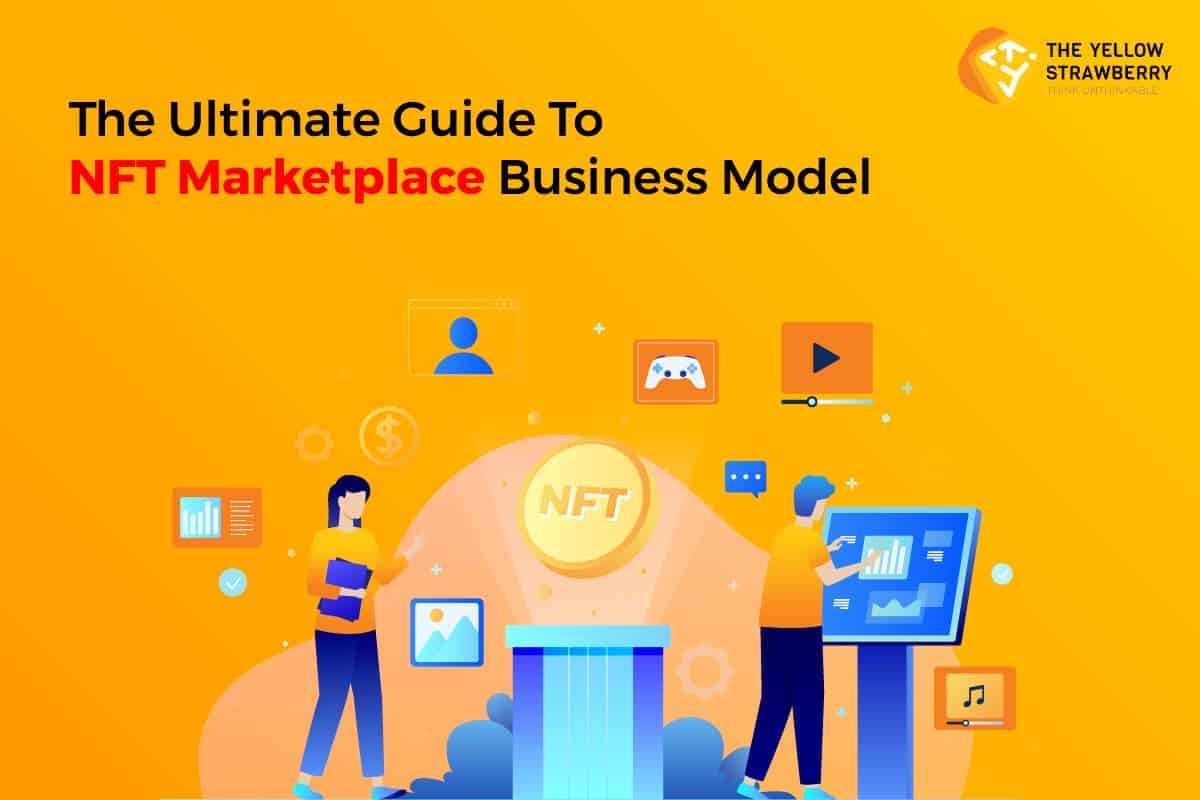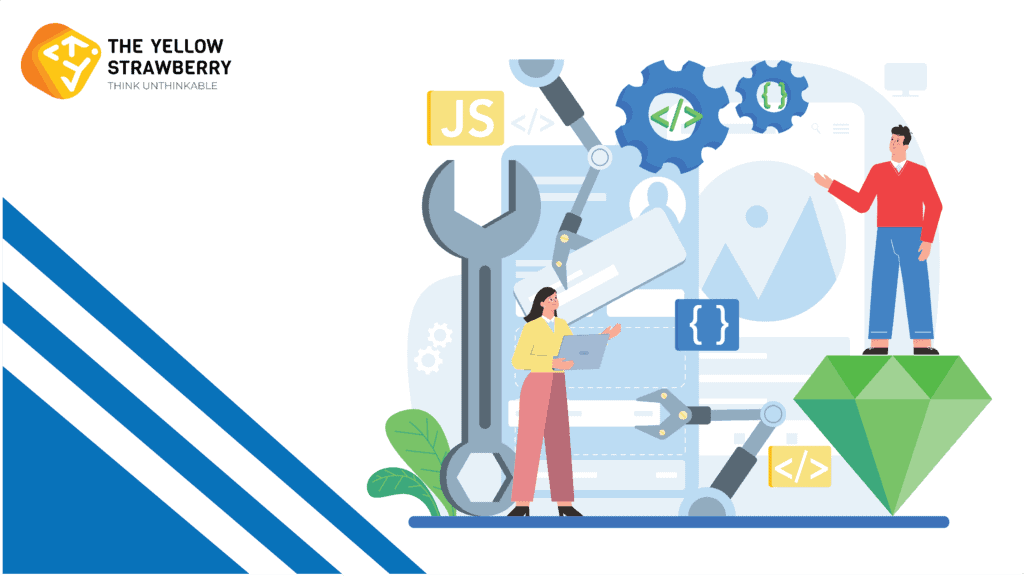Non-fungible tokens can be distinguished from standard cryptocurrencies. Because each digital token has its own online identity, they are not comparable to other cryptocurrencies. Let’s take an example of a popular cryptocurrency such as bitcoin, Ethereum or Tether. They can be exchanged for BTC at the same price. NFTs work in a different way. Digital assets cannot be duplicated, copied or stolen. It is protected by smart contracts. It is a great digital asset in crypto because of its novelty, location and ability to produce a single edition.
The NFT sector is seeing a multimillion-dollar revenue structure. It is no surprise that NFT’s benefits are being used by early adopters to increase their income streams in a variety of sectors such as gaming, entertainment, real estate, and sports. With the help of Ethereum blockchain development services, the NFT platform was created. This unique platform allows for specialization and unique characteristics across different tokenized solutions.
NFT Business Model offers substantial investment opportunities and better returns. NFT tokens can be unique tokens that are made from collectibles, or products such as music, video games and artwork. Users can tokenize their digital and physical assets through the NFT Marketplace Platform’s development and make them collectibles or tokens. NFT Marketplace could function as an auction and shop.
Let's look at some examples of NFT to better understand it. These are some of the most popular NFT examples:
-
Coupons/Ticket
-
Digital collectible
-
Domain
-
In-game item
-
Music Track
-
NFT art app
-
Original digital piece
-
Patterns
-
Shoes that are unique
We now have a general overview of NFT’s marketplace. Let’s take a look at four business models that NFT offers.
NFT Business Model
It is divided into four segments to make it easier for you to understand the NFT Marketplace Business Model. The NFT Business model is an obvious choice because there is a large market for virtual products.
Digital Collectibles
The NFT Business Model is the most popular digital art. Digital collectibles include clips and music from sporting events as well as other forms of intellectual property such as patents.
Some NFTs may even be able to act as digital twins and parallels to natural objects. How is this possible? It may seem strange to have a digital file that can easily be copied, emailed or downloaded. Non-Fungible Tokens, or NFTs, are unique identifiers for digital files and can be used to track their history and prove ownership.
Solid Communities
NFT communities are groups of investors and collectors who work together to build their own culture and brands, which will help the project achieve its potential for success in the future. To succeed with NFT projects, you need strong NFT communities. NFT initiatives can only succeed if they have the right mix of community and exclusivity. Every owner of an NFT is automatically both a shareholder and a representative.
Experiences that have been proven to work
In the past, paper records were used to prove experience. In many cases, this is still valid, such as when a ticket or college diploma is used. It has the disadvantage of making paper paperwork easy to duplicate or misplace. NFTs could be used to facilitate experiences such as learning, travelling, and attending sporting events. Because blockchain has the inherent ability to eliminate middlemen, this change in accessing and documenting experience could lead to fewer ticket vendors and institutions.
Secure Personal Information
NFT solutions are worth looking into for healthcare records and identification documents. This is a good option for storing sensitive information. You can also use the NFT solution to vote due to its security.
Checklist for NFT Marketplace Business Model
A checklist is used to plan a trip or pack for one. This checklist can also be used to create a profitable NFT Marketplace Business Strategy.
Select the Ideal Blockchain Network
These stats show the popularity and growth of the blockchain network. Cryptocurrencies are a hot topic in this digital age. These cryptocurrencies are most often based on the blockchain network.
Choose the Token Standard according to your needs
After choosing the blockchain network that you want to use, it is important to choose the right token standards. ERC-721 and ERC-115 are the best token standards, as Ethereum is the most popular blockchain standard. Your token will also be different based on the NFT requirements.
-
ERC-721
All tokens that are created according to ERC-721 specifications will be unique and unalterable. This standard describes the evolution of NFTs on Ethereum’s blockchain.
-
ERC-998
It uses both uniform and non-fungible tokens, (ERC721) (ERC20).
-
ERC-115
This is a token that allows users to register both fungible and nonfungible tokens using the same address as a smart contract.
-
TRC-721
TRC-721 deployment is made easier and faster by a knowledgeable public chain structure.
Choose your domain
Domain is one of the most important factors affecting NFT market. Pick it carefully to grab buyers’ and creators’ attention. The only thing that will influence the domain you select is your business’s goals.
Choose the Right NFT Market Type
There are four types NFT Marketplaces. There are two types of NFT Marketplaces: Curated & Un-Curated and Open & Closed. Both open and closed marketplaces work in the same manner, the difference being that open NFT can be accessed by all users. Closed NFT Marketplace users can only participate in trades. There are two types: curated and uncurated. Digital artists often turn to niche or specialty sources to sell and promote their art, valued projects and works of art in both uncurated and curated formats. You can sell a piece of art online in just a few minutes using non-curated NFT platforms that are not curated. These services are free to use, and users don’t need to sign up.
How to make an NFT marketplace business model monetizable?
NFTs are Etherium-based digital asset transactions. These coins, which are based on blockchain technology, are unique, verifiable and indivisible. These NFTs are ownership rights to digital assets, artwork, and other items. NFT Marketplace is where NFT vendors offer their NFTs for cryptocurrency. Marketplace owners usually demand a fee from NFT vendors, which is typically between 2.5 and 5%. Many people buy and sell NFTs. Other than this, the NFT Marketplace owner can also earn a decent income by charging and levies.
-
Listing Fee
NFT Marketplace is the center for crypto memorabilia. OpenSea hosts over 2 million collections and more than 80 million NFTs. It is difficult to categorize each collectible individually. It is difficult to group collectibles into different categories on a platform. This gives them a name that is easy to find. Since category listing is easy for NFT Marketplaces, businesses charge authors a fee. The cost of listing a category can be used to determine the fee. Investor demand and fresh information are also factors.
-
Start Fees
Protocols are required to support all NFT transactions. NFT platform developers must also pay for the technology that enables NFT work. To bridge the gap between platform and technology, content producers are charged early start fees by businesses to publish on commercial websites.
-
Minting Fees
For registering original content on blockchain networks, minting fees will be charged. It is possible to create a blockchain-based NFT “minting” digital files. Instead of minting every collectible one by one, content providers might be able to pay less by creating more on the platform.
-
Private Sales
This option is only available if the content writer wishes to sell to a particular category. They can also pay the administrator private sales fees. They can view the merchandise or the auction, but they cannot purchase anything. It is much easier to find real clients than people who just want to increase the NFT price.
-
Bidding Fees
NFT Business Model can impose additional fees on top of the bidding costs. Clients or the creators of bidding products or services must pay this sum. Bidding fees can be affected by the date of the auction, the product value, and the entry of players.
-
Transaction Processing Fees
Gas costs (payments made by users for computing energy) are required to maintain and operate the blockchain network. They must be paid along with the transaction processing fees. You might be curious as to why. To make peer-to-peer payments, you can use cryptocurrencies, stablecoins, and social tokens. Although blockchain technology is widely used in cryptocurrency, investors need to deal with it in order to complete transactions.
-
Affiliate Program
Artists look for a marketing plan to promote their products. Companies can charge for real-time information about bitcoin collectibles and rewards programs.
-
Multiple Sales Charges
NFT markets can also make money by implementing multiple sales tariffs. Artists often use the NFT Marketplace for sales of various works. However, the Marketplace must pay network fees in order to complete these deals. You can receive a portion of this fee from the creators.
-
Wrapping up the NFT Business Model
This was it! We hope this article helps you to make informed decisions about NFT Business Models you can use. The cryptocurrency economy has grown even further with NFTs being included in its robust ecosystem. In the future, there may be several NFT Marketplaces. This will allow fashion designers, artists, photographers, sports enthusiasts, and game developers to have access to the unique NFT Platform Business Model. These digital collectibles will have a greater impact and be more valuable.
Use of Apple Watch
The watch apps depend on the particular specifics of the user. The maker wants a whole new mindset when making an Apple watch. The watch provides multiple features to the user, for instance:
-
Health Tracker
-
Quick access to details
-
Action rings for regular activities
-
Complete iPhone pairing
-
Complexity is low
In terms of the number of displays, types of users, and the use of sensors, small complexity apps are usually low. Mobile applications typically take between 100-300 hours to build with low complexity.







